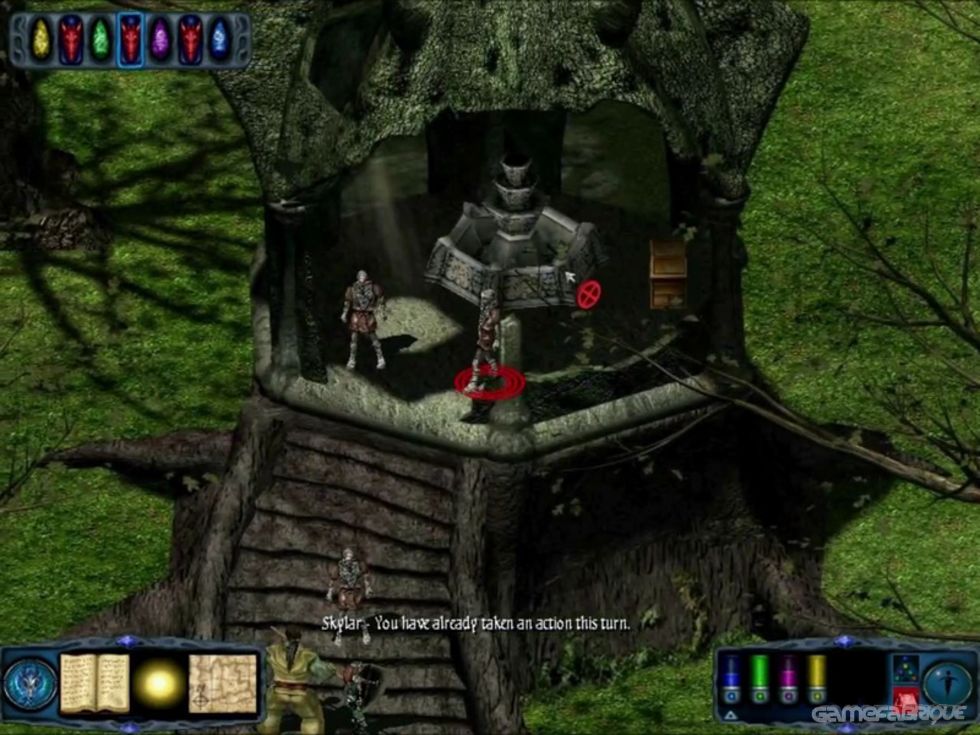

Yet since your progress is dependent on finding a few key items, you'll likely be motivated by fear that you'll miss a vital item, or frustration when you can't find a particular one, to waste time fruitlessly smashing hundreds of hapless pieces of furniture. But unlike games such as Diablo that similarly stock their environments with breakable objects, there's almost never anything contained in the barrels, boxes, and tables scattered through the dungeon levels. A variety of objects did make it into the game, but you can't do anything with them other than smash them. Early press materials for the game promised that characters would be able to tip over tables, push crates, block doors, climb objects, and otherwise interact with the environment to thwart opponents or gain tactical advantages. The initial design for the game contemplated letting characters interact with a variety of objects in the gaming world. You'll also fight each of the game's various monster types hundreds of times, and there's little variety to these engagements, once you master a few rudimentary tactical maneuvers. Still, the fights in Ruins of Myth Drannor lack the complexity of Baldur's Gate II's mage duels and the variety of tactical options offered by other turn-based combat games, such as Jagged Alliance 2. The turn-based nature of Ruins of Myth Drannor also lets you more effectively cast spells than you could in the frantic, dynamic real-time skirmishes of recent D&D games, and the game's interface highlights each spell's proposed area of effect to facilitate precise targeting. The combat and movement aspects of the rules were adapted relatively faithfully, so you can maneuver your characters to flank opponents, charge distant enemies, or be positioned to make attacks of opportunity against nearby foes that attempt to cast spells.

While last year's Baldur's Gate II plucked a few elements from the new D&D 3rd Edition rules, Ruins of Myth Drannor is the first game to attempt to comprehensively adapt those rules. Although this will disappoint those who were hoping for a more substantial RPG, at least the battles can be engaging, even if repetitive.

Many RPGs are combat intensive, but combat is virtually the entire focus of Ruins of Myth Drannor. Since the skeletal plot is completely linear and there are no meaningful opportunities to role-play characters of varying alignments or motivations, the emphasis of the game is almost exclusively on tactical combat. There are very few nonplayer characters to interact with, and no depth to your interactions with those characters. Those plans were either changed or significantly reduced in scope, since the game's dungeon layouts are simplistic and largely devoid of distinctive features. Myth Drannor is one of the most famous cities in D&D's Forgotten Realms milieu, and early in the game's design the developers indicated that they were going to incorporate existing maps and other source material from tabletop D&D to flesh out environments. Instead, as the name suggests, the game is almost entirely set within the labyrinthine ruins of the ancient city of Myth Drannor, and gameplay primarily consists of tactical combat interrupted by brief spelunking interludes. Ruins of Myth Drannor doesn't attempt to provide an expansive gaming world or varied gameplay. Ruins of Myth Drannor mostly consists of turn-based tactical combat. Pool of Radiance: Ruins of Myth Drannor features some good graphics and a decent adaptation of D&D's turn-based tactical combat, but the game is primarily an uninspired dungeon crawl, burdened by repetitive gameplay, a cumbersome interface, and some serious technical issues. Given that pedigree, it's surprising that the design for its belated spin-off is so lacking in ambition.
#Pool of radiance ruins of myth drannor characters series#
It spawned the acclaimed "gold box" series of D&D games, which is still mentioned reverentially by RPG fans. Pool of Radiance was an ambitious, pioneering game that offered an effective combination of first-person-perspective exploration and tactical combat from an isometric perspective. While most early computer role-playing games were essentially crude, unauthorized adaptations of pen-and-paper Dungeons & Dragons, computer gamers weren't granted the opportunity to play a sanctioned translation of D&D until the 1988 release of Pool of Radiance.


 0 kommentar(er)
0 kommentar(er)
